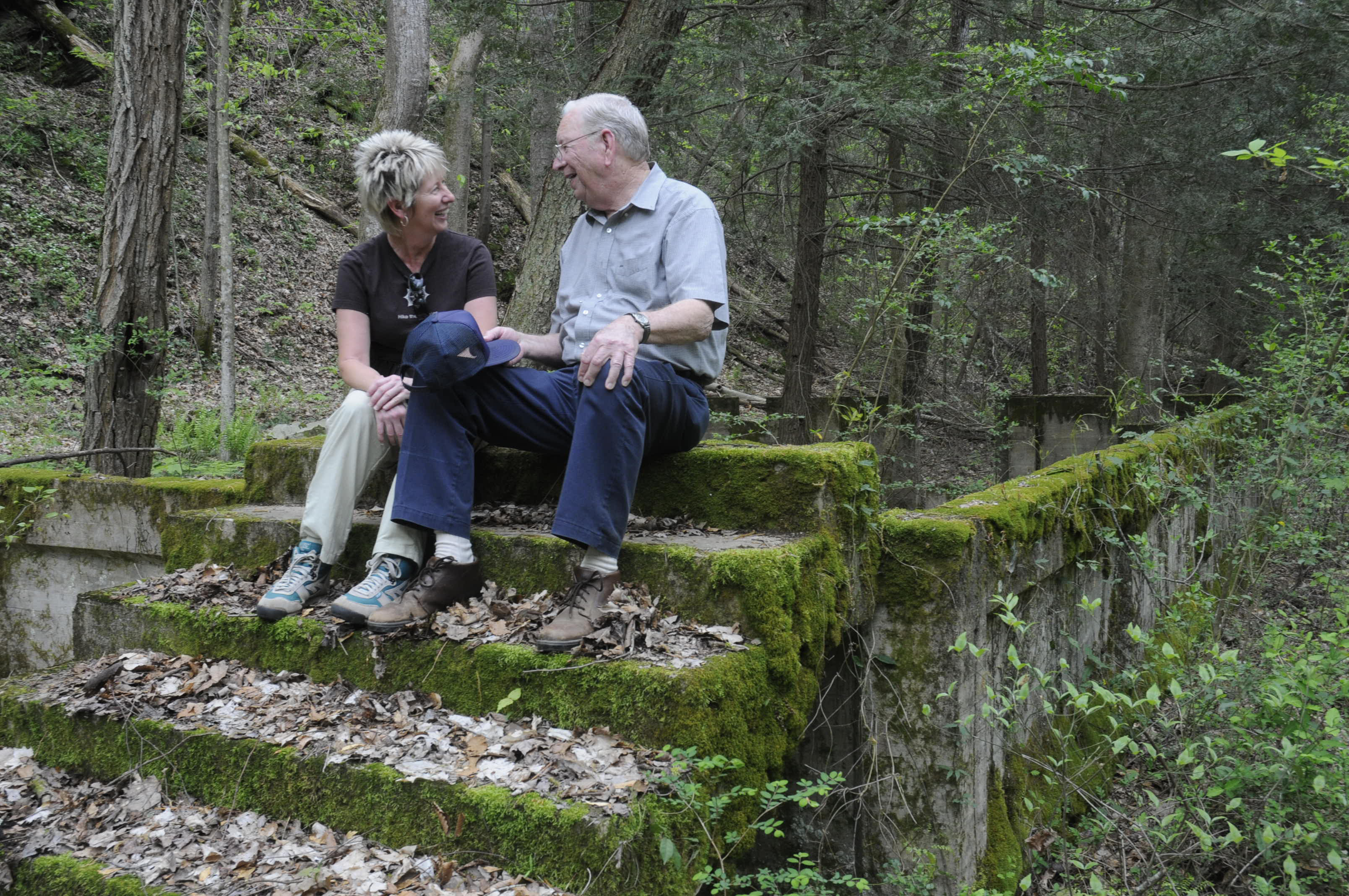GOT MEMORIES?If anyone has photos or stories to tell about Caney Creek, contact Will Moore at 423-715-2399, at willmooremedia@gmail.com or www.willmooremedia.com.LOCAL HISTORYThe Saturday radio talk show on local history called "Old Town Cleveland" can be heard on 99.9 WOOP-FM from 10 a.m. till noon.
Century-old foundations swept bare of all but moss hint at the history of the rural Tennessee village on the bank of the Ocoee River.
Countless such communities have come and gone throughout the South.
But Caney Creek was not like the others.
The little 14-home outpost built in 1912 was ahead of its time, with electricity and running water - modern conveniences almost unheard of back then.
Thirty years later, the town had outlived its usefulness, and today nature has all but reclaimed it.
"This is a part of Appalachian history on the verge of disappearing," said Debbie Moore, who with her husband Ron hosts a Saturday radio talk show on local history called "Old Town Cleveland."
Only a handful of the people who lived at Caney Creek are still alive. One of them is 81-year-old John "Doc" German.
On a perfect spring day last week, German led his daughter and a few others back to where he was born and spent the first 13 years of his life.
The sidewalks, the tennis court, the foundations, water pipes, old light bulbs and bridge parts are all still there.
So are German's memories. Standing before each of the foundations, including that of his own house, German has a story to tell about each.
"OK, people, I'm going home now," German said and climbed the rock-and-concrete steps to what used to be his front door.
The mossy steps go up only to a foundation; there is no house.
"As you walked in, this was the front room," German said.
He spent his childhood in the house with his parents, Lawrence and Maggie, and four siblings.
German explains where the kitchen and bedrooms were. He talks about how he only had to walk next door to the school. He remembers running water and electricity, years before most people had them.
Will Moore was among his listeners. Moore, 20, a Chattanooga State Community College student, wants to preserve the memories. His very first project as a videographer is to make a documentary about Caney Creek.
"It was kind of my mom's idea," Moore said. "Everybody knows she's kind of a history nut. But then I met Doc. He is charming. He never stops talking. He is just full of energy and a great personality.
"If there is one thing I have learned from my parents, it's that history needs to be saved," said Moore, a media technology student.
Caney Creek, hemmed between a mountain and a river now famous for whitewater sports, was created to house workers for Ocoee Powerhouse No. 2. The East Tennessee Power Co. built the Ocoee River powerhouses between 1910 and 1913. The dams created today's Parksville Lake and helped generate electricity that was sold to Chattanooga.
The company built the houses so their workers would be readily available.
Besides the homes, there was a hotel with a tennis court used mostly by weekend visitors as a mountain get-away. There was a railroad track beside the houses for a trolley pulled by a "Dinky" engine that took people to the swinging bridge over the river. It was the only link to the outside world. A grocery truck parked across the river once a week to deliver food.
Kids who were old enough crossed the bridge to catch the Polk County school bus to high school.
"When I was a kid everybody could just walk back here," said Kathy Karnes, Doc's daughter. "All I ever saw was the foundations, too."
Three decades later, the powerhouse at Caney Creek became part of the Tennessee Valley Authority network.
These days, what's left of Caney Creek sits behind the gate to Powerhouse No. 2 for security and safety reasons.
Doc sat down on the steps to his childhood home with Kathy beside him. The memories flowed, about hard-working people and a few characters.
"We didn't have anything to do for fun," he said. "So Wilburn Lowe would tie a rope to a pink Victory bicycle and we would ride it down into the lake. Nobody could swim, but nobody drowned."
The school bus was a 1932 Ford, green with black fenders. It stopped on the other side of the swinging bridge to pick up the high school kids. Doc went on to a career as a race car driver, car dealer and motorcycle dealer, so he remembers the vehicles and all their details.
"Sam Wilcox walked seven miles across these hills from Greasy Creek to work and never missed a day," German said. "He got here by daylight every morning with a lantern and left, regardless of the weather, at dark."
When TVA took over the powerhouses along the Ocoee in the early 1940s, Caney Creek came to an end. The Great Depression had settled in across the country, although Doc said his family couldn't tell much difference.
"My dad made $26 a month," he said.
His dad worked at Powerhouse No. 2 for 46 years. He didn't want to move, Doc recalls, and stayed until 1943, two years after the village was closed. The buildings were dismantled, with the wood, windows and furnishings moved to Cleveland or Copperhill for use in new homes.
The Germans moved to a house in Bradley County in 1943.
"We were sad because we had to move to a house that didn't have electricity or running water," German said.

